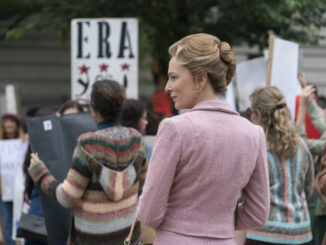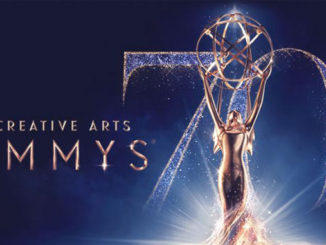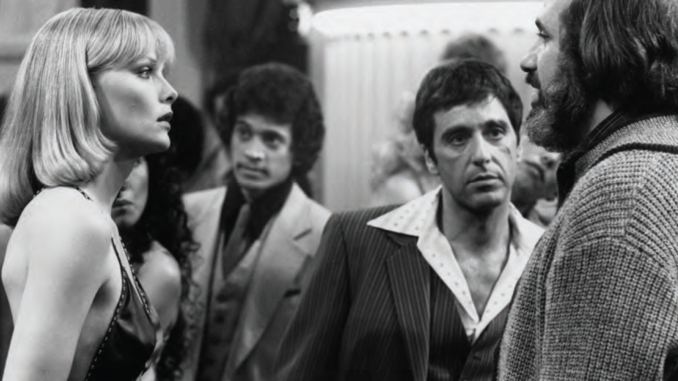
By Peter Tonguette
While good movies are produced every year—and particularly good years for movies come along at least every few years—there are certain decades that ought to be remembered for the strength of their cinematic offerings. Consider the 1930s. This decade commenced with the first talkie to star Greta Garbo, continued with the introduction of the Universal Monster Movies and “Thin Man” series, survived the imposition of the Production Code, and concluded, in glorious form, with one of the industry’s best-ever years: 1939, which saw the release of, among other certified classics, “Gone with the Wind,” “The Wizard of Oz,” and “Stagecoach.”
In more recent times, the 1970s has emerged as the decade that seems, to many observers, most consequential: During those years, the New Hollywood directors, whose ranks included Hal Ashby, Peter Bogdanovich, Francis Ford Coppola, William Friedkin, Martin Scorsese, and Steven Spielberg, were at the peak of their artistry and influence, and we are still living with the legacy of the best films they made: “The Godfather” and its first sequel, “The Last Picture Show,” “Mean Streets,” and so on.
By contrast, the 1980s has generally had a far more mixed reputation. At the time, it must have been hard to see how the boffo box-office successes of that decade could possibly compare with the cinematic expressiveness of the years that preceded it. Yet Americans’ weakness for nostalgia is a very real thing, and most moviegoers look back with fondness, even reverence, on films like “Back to the Future,” “Beverly Hills Cop,” “Fast Times at Ridgemont High,” “Ghostbusters,” “Top Gun,” and “Die Hard.” Many of these titles have been rebooted, or at least given sequels, in recent years.
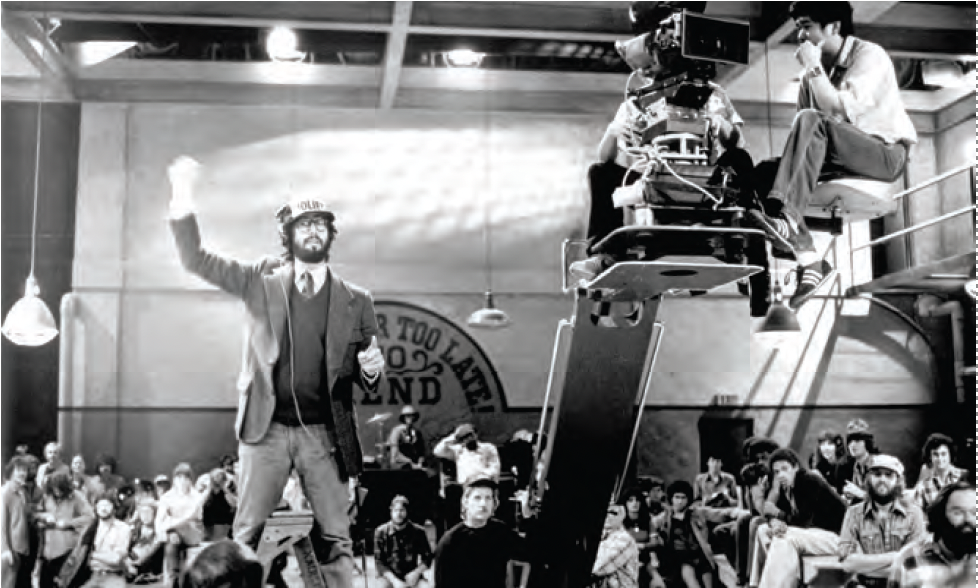
Three recent books tap into moviegoers’ affection for the 1980s. Two of the tomes offer exhaustive accounts of the making of a pair of films representative of the era—John Landis’s “The Blues Brothers” (1980) and Brian De Palma’s “Scarface” (1983)—while the third is the autobiography of a figure who first came to attention, in both television and features, during that decade, writer-director-producer Ed Zwick. Each of the volumes has its strengths and limitations, but anyone who looks back fondly at that decade—at least for what was in theaters and on TV—will find plenty to enjoy here.
Released at the start of the 1980s, “The Blues Brothers” ironically reflects the preference for tacky gigantism that characterized the tail end of the New Hollywood movement, including Hal Needham’s “Smokey and the Bandit” (1977), Landis’s “National Lampoon’s Animal House” (1978), and Steven Spielberg’s “1941” (1979). In theory, “The Blues Brothers” tells a relatively simple story of a pair of wayward Chicago blues musicians—“blood brothers” Jake Blues (John Belushi) and Elwood Blues (Dan Aykroyd)—who seek to raise funds to spare a Catholic orphanage by resuming their performance career. In practice, however, the film is a sprawling cacophony of action and sound, comedy and fury: car chases, elaborately executed slapstick, and, above all, lovingly filmed musical performances by icons such as James Brown, Ray Charles, and, of course, Aretha Franklin.
In his book on “The Blues Brothers,” author Daniel De Visé acknowledges the film’s firm roots in the 1970s: De Visé opens his book by evoking the befuddlement in the “Saturday Night Live” studio audience on the night of April 22, 1978, when Belushi and Aykroyd—donning suits, hats, and attitude—marched onto stage and performed, inexplicably, Floyd Dixon’s “Hey Bartender.” Here was the national debut of the Blues Brothers, but who—or what—were they? “Was this an elaborate skit?” De Visé writes. “Was it serious? No one seemed to know. SNL was a comedy show that took its music seriously. Lorne Michaels, the program’s creator and showrunner, had hedged his bets, presenting the Blues Brothers in the guise of a sketch rather than a musical break. He left viewers to judge whether the act was serious or satiric.”
Although it was more the latter than the former, Belushi and Aykroyd’s affection for the blues was not a put-on. As a youth in his native Ottawa, Ontario, Canada, Aykroyd developed into a serious connoisseur of blues music, attending a performance by Memphis soul duo Sam Moore and Dave Prater at the Expo 67 in Montreal. “I came back and I said, ‘This is the music I want to know about,’” Aykroyd said. Years later, upon meeting heavy metal fan Belushi, Aykroyd shared his idea for an R&B duo: “The kind of guys who had done time in Joliet Prison,” as De Visé puts it.
Books about single films have become a genre unto themselves in recent years—some of the more notable examples include volumes about “Chinatown,” “The Godfather,” and “Who’s Afraid of Virginia Woolf?”—and most of them share what seems to be an unavoidable flaw: because the making of one movie is unlikely to sustain several hundred pages, these books often are weighed down with digressive background material. Alas, De Visé’s book is no exception: Crammed into the book are, among other things, extended mini-biographies of Belushi, Aykroyd, and director Landis, a fulsome account of the early years of “Saturday Night Live,” ample material on Second City and “Animal House,” and so on. All of this is interesting, so far as it goes, but it adds up to pages upon pages to plough through before we reach the ostensible subject: the movie “The Blues Brothers.”
Happily, De Visé proves an able chronicler of the film’s production. We learn that the somewhat nerdish, undeniably obsessive Aykroyd produced a screenplay that far exceeded standard lengths. “I was told that most screenplays were 120 to 150 pages long,” Aykroyd said, “but when I sat down to write ‘Blues Brothers,’ there were so many descriptive passages in there, just paragraphs and paragraphs of shots and concept sand ideas.” Ultimately delivering a draft of 324 pages, Universal was both excited and bewildered. “With all the insane flying-through-the-air cars and destruction of property, the movie was not going to be cheap,” said executive Thom Mount.
It wasn’t cheap (the final cost is said to have been about $32 million), but it was all beautifully filmed. “I looked at Dick Tracy comic books, and that became my kind of palette,” said cinematographer Stephen M. Katz, who used 14mm lenses to achieve depth of field. “I wanted everything in the world . . . to be in focus. It’s a style. It’s the way comic books are.” The shoot was arduous (“At times, during those long weeks in Chicago, the ‘Blues Brothers’ shoot came to resemble a montage of car chases”), attention-grabbing (“Nearly every ‘Blues Brothers’ scene would play out to an impromptu audience” during the filming), and decidedly under the influence, as when Carrie Fisher, as Jake Blues’s homicidally inclined ex-girlfriend, was so “spaced out,” as cinematographer Katz put it, that she was hardly able to get a word out when filming a scene in which her character scrutinizes a flamethrower manual: “She and Penny Marshall had dropped acid before the shoot,” De Visé writes.
When editor George Folsey Jr., ACE, put the pieces together, “The Blues Brothers” had a running time of about three hours. “Landis hoped to screen his action musical-comedy saga with a Broadway-style intermission,” De Visé writes, invoking the example of old-school epics on the order of “Ben-Hur.” Universal prevailed upon Landis and Folsey to trim 20 minutes, then another 10 to 15 minutes, until the final running time (133 minutes) was attained. “The rhythm was gone,” griped Landis, but the verdict was in: Even though the still-generous, two-hour-plus running time meant fewer bookings, audiences embraced the picture, its soul, its sound, its sight gags. “Landis’s car chase musical earned nearly $1 million that week in Chicago alone, where it played in only sixteen theaters,” De Visé writes, referring to the opening weekend. Like the film itself, this book can be unfocused and ungainly, but at its core is a terrific story.
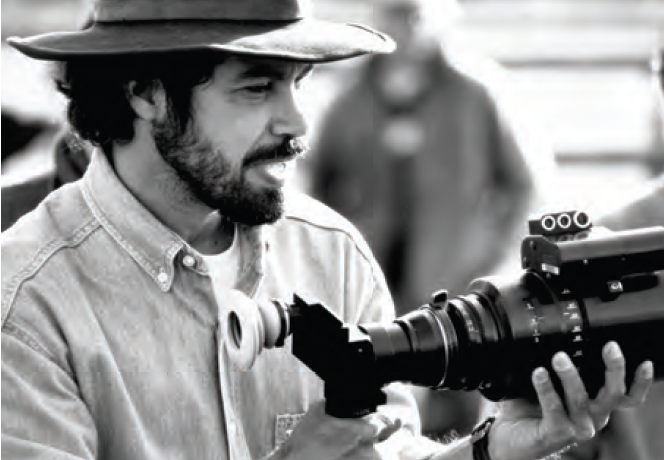
Like De Visé’s book on “The Blues Brothers,” author Glenn Kenny’s book on the 1983 version of “Scarface” suffers from its own case of overabundance: In “The World Is Yours,” Kenny sets the stage for his behind-the-scenes account of the making of the movie by first attending to, among other things, Prohibition, the rise of organized crime, and the genre of the American gangster movie—all of which provided the template for the original 1932 Howard Hawks-Howard Hughes production of “Scarface.” The making of that justly celebrated film, starring Paul Muni as mobster Tony Camonte, is also dealt with in detail, though the most interesting passages are those in which Kenny, a former film critic at Premiere, adds his own perceptions. Although he finds some of the original film’s devices “quaint” and “corny,” he rightly perceives the film as Hawks’s most visually adventuresome. “[Hawks] and [cinematographer] Lee Garmes luxuriated in the shadows of criminality’s Night World, and brought in a fantastic recurring visual emblem: most times a murder is committed in the film, a giant ‘X,’ either in the local architecture or in shadow, appears on screen,” Kenny writes, noting that, in this case, “X” stands for death.
Even after Kenny works his way up to the 1983 “Scarface,” he spends far too much time setting up the movie and its assorted participants. It is perfectly well and good to be reminded of lives and careers of star Al Pacino (as mobster Tony Montana), producer Martin Bregman, and director De Palma, but, eventually, isn’t it time to start discussing, you know, the movie they all got together to make? Finally, once Kenny gets around to the task, the book picks up some steam. We learn how Bregman, casting about for the right approach for a new “Scarface,” turned to screenwriter Oliver Stone and director Sidney Lumet, the latter of whom influenced the setting and focus of the final film: the film would not be set among bootleggers in Chicago, but drug lords in Miami. Speaking with his own biographer, Andrew Yule, Lumet said, “I also wanted to introduce political ramifications, exploring the CIA’s involvement in drugs as part of their anti-Communist drive. I didn’t want to do it just on a gangster or cop level.” When Lumet read Stone’s screenplay, however, he realized the film was becoming less political, more melodramatic. “Sidney reacted badly to my first draft, which was pretty close to the final draft—it was violent and vulgar, all those things—and it was too much for Sidney,” Stone said.
Bregman apparently realized this called for a director unafraid of violence and vulgarity—namely, De Palma, who had been involved in an earlier, pre-Stone, pre-Lumet incarnation of the remake. Now he was tasked with bringing to fruition Stone’s glossy, overblown vision. “When Brian’s making a gangster film, he wants it to be big,” Stone says. “He wants it to be like a Sergio Leone kind of gangster film. He wants it stylistic. He wants big scenes, a lot of suits, a lot of clothes, a lot of costumes, jewelry.” Co-starring opposite Pacino’s Tony Montana was Michelle Pfeiffer as his eventual spouse, Elvira—whose presence in the film is a virtual embodiment of Stone and De Palma’s glitzy, extravagant approach.
Yet, as Kenny rightly notes, De Palma— the director of such lurid entertainments as “Carrie,” “Sisters,” and “Dressed to Kill”—was cerebral and even cautious in how he brought his vision to life. “De Palma may have maintained a vivid, unruly, violent imagination throughout his creative existence, but, in keeping with the meticulousness of his visual style, he kept an orderly life,” Kenny writes. De Palma, who storyboarded the entire film, says he saw his role as essentially illustrating Stone’s script. “I wasn’t imposing some type of visual style of my own, I was just trying to interpret his material,” says De Palma, who also lavishes praise on “visual consultant” Ferdinando Scarfiotti, to whom “the whole look of the film” can be attributed. Kenny describes the aesthetic very well: “a hard-edged sheen.”
Although De Palma rails against shooting coverage—“I always believe that you spend a lot of time thinking about where the camera is in relationship to the material,” he says—on “Scarface,” he set aside that preference in deference to his star. “I would shoot as much as Al wanted to,” De Palma says. “That scene with him consoling his dead sister, I just kept shooting, you know, to see what would happen. And we had . . . multiple cameras shooting from, you know, two different angles, three different angles.” Perhaps because he prized himself on advance planning, De Palma is described as a fairly lethargic leader on set, though his attention is said to have been roused when working on the over-the-top shoot-’em-up scenes, which included a “synchronization method” that enabled the camera to register each burst of gunfire. Says cinematographer John A. Alonzo: “The synchronizer prevents the gun from shooting unless the camera shutter is open. It’s a little cumbersome, because now the actor has another wire coming down his leg, and he can’t necessarily fire as fast as he’d like to. . . For those shots where it was essential to get the flash, to see the gunfire, it was invaluable.”
Editors Jerry Greenberg, ACE and David Ray, working along with associate editor Bill Pankow, ACE reckoned with the resulting footage. “Al’s approaches were hugely varied,” Ray says. “Particularly the scene in the bathtub. Sometimes he would do it very quietly. And other times he’d be very over-the-top. And I discussed it with Jerry, because we were worried that time is running out, and we wouldn’t have time to figure out how to give everything a coherent flow. . . . We had to do a lot of extra guesswork, and mine was occupied with trying to get a middle ground in terms of where the movie and the performances were going.” Not that many people would describe “Scarface” as a movie that existed in any sort of “middle ground”; it was a movie of extremes, particularly in its violence. “A lot of the scenes are a bit difficult to take,” Ray says. “The chainsaw sequence I found very disturbing. Jerry cut that. And the only way I could get used to it was to take the actual reel into my own cutting room, and I’d run it down and look at the frames by themselves. And then I eventually got used to it.” The explicit and pervasive violence in “Scarface” remains controversial and troubling, though Kenny makes a persuasive case for the picture’s enduring popularity. “What it aims for is phenomenological intensity—a spectacle!—and it achieves it,” he writes.
Compared to these accounts of movies as relentlessly excessive as “The Blues Brothers” and “Scarface,” Ed Zwick’s “Hits, Flops, and Other Illusions” amounts to something of a palate cleanser. The co-creator of the ultimate 1980s-era TV program “thirtysomething” and later the director of “Glory” (1989) and “Legends of the Fall” (1994)—and producer of “Shakespeare in Love” (1998) and “Traffic” (2000)—has built a reputation as a humane, empathetic storyteller. His memoir is written in the same self-effacing spirit. “I loved the auto-biographies of Billy Wilder, Sidney Lumet, Nunnally Johnson, Akira Kurosawa, and so many others,” he writes. “To discover that these Olympian talents were forced to deal with the same indignities I would eventually endure was perversely comforting.” Even so, he has no illusions about his own stature in the business. “I am reconciled that my career will never rival those of my heroes,” he writes.
That is not to say that Zwick glosses over the challenges he has faced through the decades. To the contrary, the book’s most engaging chapters concern his struggles with various Hollywood personalities. While making the Civil War epic “Glory,” Zwick contended with opinionated co-star Matthew Broderick, who, at various points, recruited Horton Foote and Bo Goldman to weigh in on, or rewrite, the script, and asked his mother to give Zwick feedback. While trying to put together “Shakespeare in Love,” Zwick learned how mercurial stars could be when Julia Roberts expressed strong interest before leaving the filmmaker at the cinematic altar. And, inevitably, there is disgraced Miramax mogul Harvey Weinstein, who was willing to make “Shakespeare in Love” but, shamelessly, tried to do so without the participation of Zwick. To his credit, Zwick never comes across as bitter, angry, or even cynical; he is simply sharing battle scars for the benefit of the next generation.
The book is studded with practical bits of advice, including the importance of inserting humor into movies whenever possible (“Laughter lets the audience know they’re in good hands”), the value of napping on location (“In your chair. In the back of the prop truck. In your trailer”), and the absolute necessity of scrutinizing every frame of film for a usable moment: “There’s gold to be found in the outtakes before you said ‘Action’ and after you said ‘Cut,’” Zwick writes. Happily, there’s gold to be found on nearly every page of this engaging book.
“The Blues Brothers: An Epic Friendship, the Rise of Improv, and the Making of an American Film Classic” By David De Visé – 386 pages – Atlantic Monthly Press – $28 – 2024
“The World Is Yours: The Story of Scarface” By Glenn Kenny – 320 pages – Hanover Square Press – $32 – 2024
“Hits, Flops, and Other Illusions:
My Fortysomething Years in Hollywood”
By Ed Zwick – 304 pages – Gallery Books –
$28.99 – 2024
Peter Tonguette is a freelance writer whose work appears frequently in the Wall Street Journal, National Review and other publications.



